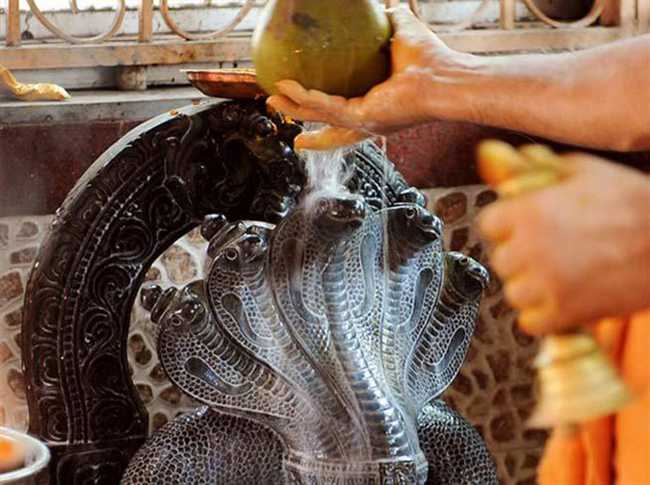 English
English

The festival of Nag Panchami, which is being celebrated today, is an annual occasion where Hindus worship snakes. Read more on Dynamite News:

New Delhi: The festival of Nag Panchami, which is being celebrated today, is an annual occasion where Hindus worship snakes. Its origins date back to the earliest days of the religion.
Nag Panchami is observed throughout India on the fifth day of the lunar fortnight in the month of Sravana. It usually occurs in July or August. The term 'Nag' means 'Serpent' or 'Snakes' and 'Panchami' means 'Fifth day'.
Offering milk to the snake god is among the primary rituals of this festival. There are numerous stories related to Nag Panchami.
As per Hindu mythology, as a child when Lord Krishna was playing by the Yamuna River, his ball became entangled in a tree's branches. He was attacked by the snake Kaliya while trying to fetch the ball.
Lord Krishna fought valiantly, and the snake begged him not to kill it. The occasion is observed to commemorate Krishna's success in sparing humanity from the threat of Kaliya, the most venomous snake.
Some of the snake gods that people in India pray to on Nag Panchami are Ananta, Shesha, Vasuki, Kambala, Padma, and Kaliya.
It is believed that anything offered to snakes on Nag Panchami would reach the serpent Gods. Hence, devotes worship live snakes on the day as representative of serpent Gods.
The traditional offering for Nag Panchami is everything milk-based, from kheer to sweets, which are then offered to the deity.
Many observe fasts and feed the poor to mark this day. Some devotees also make snake idols at home with clay. Flowers and milk are offered to the idols and placed near snake holes or burrows. Houses are also decorated with rangoli. (ANI)
No related posts found.
No related posts found.